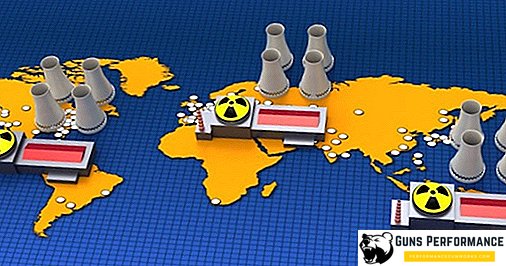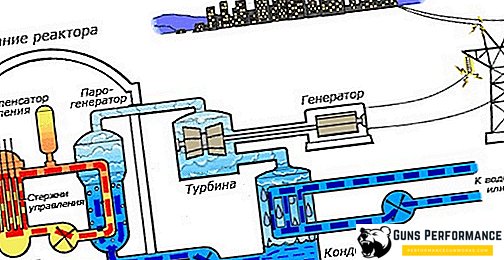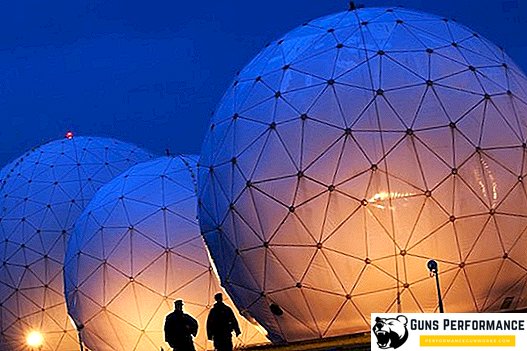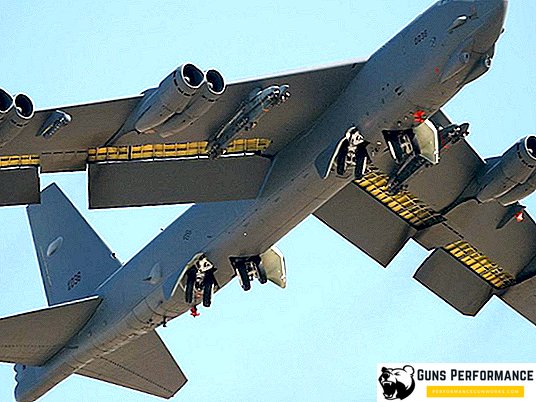NPP: from past to present
A nuclear power plant is an enterprise that is a combination of equipment and facilities for the generation of electrical energy. The specificity of this installation lies in the method of obtaining heat. The temperature required to generate electricity arises in the process of the decay of atoms.
The role of fuel for nuclear power plants is performed most often by uranium with a mass number of 235 (235U). Precisely because this radioactive element is capable of supporting a nuclear chain reaction, it is used in nuclear power plants and is also used in nuclear weapons.
Countries with the largest number of nuclear power plants

Today, there are 192 nuclear power plants operating in 31 countries of the world, using 451 nuclear power reactors with a total capacity of 394 GW. The vast majority of nuclear power plants are located in Europe, North America, Far East Asia and the territory of the former USSR, while in Africa there are almost none, and in Australia and Oceania there are none at all. Another 41 reactors did not produce electricity from 1.5 to 20 years, and 40 of them are in Japan.
Over the past 10 years, 47 power units have been commissioned in the world, almost all of them are located either in Asia (26 in China) or in Eastern Europe. Two thirds of the reactors currently under construction are in China, India and Russia. China is implementing the most ambitious program for the construction of new NPPs, about a dozen more countries around the world are building NPPs or are developing projects for their construction.
In addition to the United States, the list of the most advanced countries in the field of nuclear energy includes:
- France;
- Japan;
- Russia;
- South Korea.
In 2007, Russia began to build the world's first floating nuclear power plant, allowing it to solve the problem of energy shortages in remote coastal areas of the country.[12]. Construction faced delays. According to various estimates, the first floating nuclear power plant will work in 2018-2019.
Several countries, including the United States, Japan, South Korea, Russia, Argentina, are developing mini-nuclear power plants with a capacity of about 10-20 MW for the purposes of heat and power supply of individual industries, residential complexes, and in the future - individual houses. It is assumed that small-sized reactors (see, for example, Hyperion NPP) can be created using safe technologies that repeatedly reduce the possibility of leakage of nuclear matter[13]. The construction of one small-sized CAREM25 reactor is underway in Argentina. The first experience of using mini-nuclear power plants was gained by the USSR (Bilibino NPP).
The principle of operation of nuclear power plants
The principle of operation of a nuclear power plant is based on the operation of a nuclear (sometimes called atomic) reactor — a special bulk design in which the splitting of atoms takes place with the release of energy.
There are different types of nuclear reactors:
- PHWR (also known as "pressurized heavy water reactor") is used primarily in Canada and in Indian cities. It is based on water, the formula of which is D2O. It performs the function of both coolant and neutron moderator. The efficiency is nearing 29%;
- VVER (water-cooled power reactor). At present, WWERs are operated only in the CIS, in particular, the VVER-100 model. The reactor has an efficiency of 33%;
- GCR, AGR (graphite water). The liquid contained in such a reactor acts as a coolant. In this design, the neutron moderator is graphite, hence the name. Efficiency is about 40%.
According to the principle of the device, the reactors are also divided into:
- PWR (pressurised water reactor) - is designed so that water under a certain pressure slows down the reaction and supplies heat;
- BWR (designed in such a way that steam and water are in the main part of the device without a water circuit);
- RBMK (channel reactor having a particularly large capacity);
- BN (the system works due to the rapid exchange of neutrons).
Structure and structure of a nuclear power plant. How does a nuclear power plant work?

A typical nuclear power plant consists of blocks, within each of which are placed various technical devices. The most significant of these units is the complex with a reactor hall, ensuring the operability of the entire NPP. It consists of the following devices:
- reactor;
- basin (it is stored in it nuclear fuel);
- fuel loading machines;
- Control room (control panel in blocks, with the help of it the operators can observe the process of nuclear fission).
This building is followed by a hall. It is equipped with steam generators and is the main turbine. Immediately behind them are the capacitors, as well as transmission lines of electricity that extend beyond the boundaries of the territory.
Among other things, there is a unit with pools for spent fuel and special units designed for cooling (they are called cooling towers). In addition, spray pools and natural reservoirs are used for cooling.
The principle of operation of nuclear power plants
At all NPPs without exception, there are 3 stages of electrical energy conversion:
- nuclear with the transition to heat;
- thermal, turning into mechanical;
- mechanical, converted to electrical.
Uranium gives up neutrons, resulting in the release of heat in large quantities. Hot water from the reactor is pumped through pumps through a steam generator, where it gives off some heat, and returns to the reactor again. Since this water is under high pressure, it remains in a liquid state (in modern VVER reactors about 160 atmospheres at ~ 330 ° C[7]). In the steam generator, this heat is transferred to the water of the secondary circuit, which is under much lower pressure (half the pressure of the primary circuit and less), therefore it boils. The resulting steam enters the steam turbine, which rotates the generator, and then into the condenser, where the steam is cooled, it condenses and again enters the steam generator. The condenser is cooled with water from an external open source of water (for example, a cooling pond).
Both the first and second circuits are closed, which reduces the likelihood of radiation leakage. The dimensions of the primary circuit structures are minimized, which also reduces radiation risks. The steam turbine and the condenser do not interact with the water of the primary circuit, which facilitates repairs and reduces the amount of radioactive waste during the dismantling of the station.
NPP protective mechanisms
All nuclear power plants are necessarily equipped with integrated security systems, for example:
- localizing - limit the spread of harmful substances in the event of an accident resulting in a release of radiation;
- providing - serves a certain amount of energy for the stable operation of the systems;
- managers - serve to ensure that all protective systems function normally.
In addition, the reactor may crash in an emergency. In this case, automatic protection will interrupt chain reactions if the temperature in the reactor continues to rise. This measure will subsequently require serious restoration work to bring the reactor back into operation.
After the dangerous accident occurred at the Chernobyl NPP, the cause of which turned out to be an imperfect reactor design, they began to pay more attention to protective measures, and also carried out design work to ensure greater reliability of the reactors.
XXI century disaster and its consequences

In March 2011, the northeast of Japan was struck by an earthquake that caused a tsunami, which eventually damaged 4 of the 6 reactors of the Fukushima-1 nuclear power plant.
Less than two years after the tragedy, the official death toll in the crash exceeded 1,500, while 20,000 still remain unaccounted for, and another 300,000 residents were forced to leave their homes.
There were victims who were unable to leave the scene because of the huge dose of radiation. An immediate evacuation was organized for them, lasting 2 days.
Nevertheless, every year the methods of preventing accidents at nuclear power plants, as well as the neutralization of emergency situations are improving - science is steadily advancing. Nevertheless, the future will clearly become the heyday of alternative ways to generate electricity - in particular, it is logical to expect the emergence of giant-sized orbital solar cells in the next 10 years, which is quite achievable in weightless conditions, as well as other technologies, including revolutionary energy technologies.












